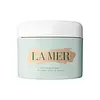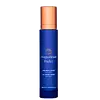What's inside
What's inside
 Key Ingredients
Key Ingredients

 Benefits
Benefits

 Concerns
Concerns

 Ingredients Side-by-side
Ingredients Side-by-side

Water
Skin ConditioningButylene Glycol
HumectantJojoba Esters
EmollientButyrospermum Parkii Butter
Skin ConditioningC12-20 Acid PEG-8 Ester
EmulsifyingGlycerin
HumectantPentaerythrityl Tetraethylhexanoate
EmollientCaprylic/Capric Triglyceride
MaskingSimmondsia Chinensis Seed Oil
EmollientPetrolatum
EmollientBehenyl Alcohol
EmollientCetyl Alcohol
EmollientSucrose
HumectantAlgae Extract
EmollientSesamum Indicum Seed Oil
EmollientMedicago Sativa Seed Powder
Skin ConditioningHelianthus Annuus Seedcake
AbrasivePrunus Amygdalus Dulcis Seed Meal
AbrasiveEucalyptus Globulus Leaf Oil
PerfumingSodium Gluconate
Skin ConditioningCopper Gluconate
Skin ConditioningCalcium Gluconate
HumectantMagnesium Gluconate
Skin ConditioningZinc Gluconate
Skin ConditioningTocopheryl Succinate
AntioxidantNiacin
SmoothingSesamum Indicum Seed Powder
Skin ConditioningYeast Extract
Skin ConditioningBupleurum Falcatum Root Extract
Skin ConditioningCucumis Sativus Fruit Extract
EmollientSigesbeckia Orientalis Extract
Skin ConditioningPhaeodactylum Tricornutum Extract
HumectantCucumis Melo Fruit Extract
Skin ConditioningAhnfeltia Concinna Extract
Skin ConditioningPolyglyceryl-2 Triisostearate
EmulsifyingMorus Nigra Root Extract
Skin ConditioningHordeum Vulgare Extract
EmollientAvena Sativa Kernel Extract
AbrasiveVitis Vinifera Fruit Extract
Skin ConditioningSilybum Marianum Extract
Skin ConditioningAcetyl Glucosamine
Skin ConditioningPersea Gratissima Oil
Skin ConditioningSodium Hyaluronate
HumectantCaffeine
Skin ConditioningBifida Ferment Lysate
Skin ConditioningAstrocaryum Murumuru Seed Butter
EmollientDimethicone
EmollientAcetyl Hexapeptide-8
HumectantGlyceryl Stearate
EmollientAcetyl Carnitine Hcl
Skin ConditioningSodium Rna
Skin ConditioningCreatine
Skin ConditioningPotassium Cetyl Phosphate
EmulsifyingSaccharomyces Lysate Extract
HumectantPropylene Glycol Dicaprate
EmollientCoenzyme A
Skin ConditioningPEG-100 Stearate
Decarboxy Carnosine Hcl
Skin ConditioningPEG-8
HumectantSodium Hydroxide
BufferingPhospholipids
Skin ConditioningAcrylates/C10-30 Alkyl Acrylate Crosspolymer
Emulsion StabilisingTetrahexyldecyl Ascorbate
AntioxidantHydrogenated Lecithin
EmulsifyingPropylene Glycol Dicaprylate
EmollientScutellaria Baicalensis Root Extract
AstringentSorbitol
HumectantSimethicone
EmollientLaminaria Ochroleuca Extract
Skin ConditioningCholesterol
EmollientCaprylyl Glycol
EmollientPotassium Sulfate
Disodium Cocoamphodiacetate
CleansingXanthan Gum
EmulsifyingParfum
MaskingLimonene
PerfumingHexyl Cinnamal
PerfumingGeraniol
PerfumingCitral
PerfumingLinalool
PerfumingBenzyl Benzoate
AntimicrobialAmyl Cinnamal
PerfumingCoumarin
PerfumingCitronellol
PerfumingDisodium EDTA
Sodium Benzoate
MaskingPhenoxyethanol
PreservativeWater, Butylene Glycol, Jojoba Esters, Butyrospermum Parkii Butter, C12-20 Acid PEG-8 Ester, Glycerin, Pentaerythrityl Tetraethylhexanoate, Caprylic/Capric Triglyceride, Simmondsia Chinensis Seed Oil, Petrolatum, Behenyl Alcohol, Cetyl Alcohol, Sucrose, Algae Extract, Sesamum Indicum Seed Oil, Medicago Sativa Seed Powder, Helianthus Annuus Seedcake, Prunus Amygdalus Dulcis Seed Meal, Eucalyptus Globulus Leaf Oil, Sodium Gluconate, Copper Gluconate, Calcium Gluconate, Magnesium Gluconate, Zinc Gluconate, Tocopheryl Succinate, Niacin, Sesamum Indicum Seed Powder, Yeast Extract, Bupleurum Falcatum Root Extract, Cucumis Sativus Fruit Extract, Sigesbeckia Orientalis Extract, Phaeodactylum Tricornutum Extract, Cucumis Melo Fruit Extract, Ahnfeltia Concinna Extract, Polyglyceryl-2 Triisostearate, Morus Nigra Root Extract, Hordeum Vulgare Extract, Avena Sativa Kernel Extract, Vitis Vinifera Fruit Extract, Silybum Marianum Extract, Acetyl Glucosamine, Persea Gratissima Oil, Sodium Hyaluronate, Caffeine, Bifida Ferment Lysate, Astrocaryum Murumuru Seed Butter, Dimethicone, Acetyl Hexapeptide-8, Glyceryl Stearate, Acetyl Carnitine Hcl, Sodium Rna, Creatine, Potassium Cetyl Phosphate, Saccharomyces Lysate Extract, Propylene Glycol Dicaprate, Coenzyme A, PEG-100 Stearate, Decarboxy Carnosine Hcl, PEG-8, Sodium Hydroxide, Phospholipids, Acrylates/C10-30 Alkyl Acrylate Crosspolymer, Tetrahexyldecyl Ascorbate, Hydrogenated Lecithin, Propylene Glycol Dicaprylate, Scutellaria Baicalensis Root Extract, Sorbitol, Simethicone, Laminaria Ochroleuca Extract, Cholesterol, Caprylyl Glycol, Potassium Sulfate, Disodium Cocoamphodiacetate, Xanthan Gum, Parfum, Limonene, Hexyl Cinnamal, Geraniol, Citral, Linalool, Benzyl Benzoate, Amyl Cinnamal, Coumarin, Citronellol, Disodium EDTA, Sodium Benzoate, Phenoxyethanol
Water
Skin ConditioningCaprylic/Capric Triglyceride
MaskingGlyceryl Stearate
EmollientGlycerin
HumectantGlyceryl Stearate Citrate
EmollientDicaprylyl Ether
EmollientPanthenol
Skin ConditioningCetearyl Alcohol
EmollientXylitylglucoside
Humectant1,2-Hexanediol
Skin ConditioningButyrospermum Parkii Butter
Skin ConditioningSilica
AbrasiveAnhydroxylitol
HumectantHelianthus Annuus Seed Oil
EmollientXylitol
HumectantTocopheryl Acetate
AntioxidantXanthan Gum
EmulsifyingBisabolol
MaskingAlcohol
AntimicrobialGlucose
HumectantO-Cymen-5-Ol
AntimicrobialBiosaccharide Gum-2
Skin ConditioningChamomilla Recutita Flower Extract
MaskingCholesterol
EmollientHydrogenated Lecithin
EmulsifyingSodium Hydroxide
BufferingTocopherol
AntioxidantAlanyl Glutamine
HumectantAloe Barbadensis Leaf Juice Powder
Skin ConditioningArginine
MaskingCeramide Ng
Skin ConditioningCeramide NP
Skin ConditioningGlycine
BufferingLysine
Skin ConditioningOleic Acid
EmollientPalmitic Acid
EmollientPhenylalanine
MaskingProline
Skin ConditioningScenedesmus Rubescens Extract
Skin ConditioningBetula Alba Oil
MaskingDisodium EDTA
Oligopeptide-177
Phenoxyethanol
PreservativeSodium Ascorbate
AntioxidantWater, Caprylic/Capric Triglyceride, Glyceryl Stearate, Glycerin, Glyceryl Stearate Citrate, Dicaprylyl Ether, Panthenol, Cetearyl Alcohol, Xylitylglucoside, 1,2-Hexanediol, Butyrospermum Parkii Butter, Silica, Anhydroxylitol, Helianthus Annuus Seed Oil, Xylitol, Tocopheryl Acetate, Xanthan Gum, Bisabolol, Alcohol, Glucose, O-Cymen-5-Ol, Biosaccharide Gum-2, Chamomilla Recutita Flower Extract, Cholesterol, Hydrogenated Lecithin, Sodium Hydroxide, Tocopherol, Alanyl Glutamine, Aloe Barbadensis Leaf Juice Powder, Arginine, Ceramide Ng, Ceramide NP, Glycine, Lysine, Oleic Acid, Palmitic Acid, Phenylalanine, Proline, Scenedesmus Rubescens Extract, Betula Alba Oil, Disodium EDTA, Oligopeptide-177, Phenoxyethanol, Sodium Ascorbate
Ingredients Explained
These ingredients are found in both products.
Ingredients higher up in an ingredient list are typically present in a larger amount.
This ingredient is also known as shea butter. It is an effective skin hydrator and emollient.
Emollients help soothe and soften your skin. It does this by creating a protective film on your skin. This barrier helps trap moisture and keeps your skin hydrated. Emollients may be effective at treating dry or itchy skin.
Shea butter is rich in antioxidants. Antioxidants help fight free-radicals, or molecules that may harm the body. It is also full of fatty acids including stearic acid and linoleic acid. These acids help replenish the skin and keep skin moisturized.
While Shea Butter has an SPF rating of about 3-4, it is not a sunscreen replacement.
Shea butter may not be fungal acne safe. We recommend speaking with a professional if you have any concerns.
Learn more about Butyrospermum Parkii ButterThis ingredient is an emollient, solvent, and texture enhancer. It is considered a skin-softener by helping the skin prevent moisture loss.
It helps thicken a product's formula and makes it easier to spread by dissolving clumping compounds.
Caprylic Triglyceride is made by combining glycerin with coconut oil, forming a clear liquid.
While there is an assumption Caprylic Triglyceride can clog pores due to it being derived from coconut oil, there is no research supporting this.
Learn more about Caprylic/Capric TriglycerideCholesterol is a class of organic molecules called lipids. It helps hydrate your skin and is essential to having a healthy skin barrier.
Our skin naturally contains cholesterol in the outermost layer. Besides cholesterol, it also contains ceramides and fatty acids. Cholesterol makes up about 1/4 of your skin's outer layer and barrier. Your skin barrier is responsible for keeping allergens and microbes out. Having a healthy skin barrier is also responsible for keeping your skin firm and plump.
Our bodies use cholestrol to create vitamin D, steroid hormones, and more.
Learn more about CholesterolDisodium EDTA plays a role in making products more stable by aiding other preservatives.
It is a chelating agent, meaning it neutralizes metal ions that may be found in a product.
Disodium EDTA is a salt of edetic acid and is found to be safe in cosmetic ingredients.
Learn more about Disodium EDTAGlycerin is already naturally found in your skin. It helps moisturize and protect your skin.
A study from 2016 found glycerin to be more effective as a humectant than AHAs and hyaluronic acid.
As a humectant, it helps the skin stay hydrated by pulling moisture to your skin. The low molecular weight of glycerin allows it to pull moisture into the deeper layers of your skin.
Hydrated skin improves your skin barrier; Your skin barrier helps protect against irritants and bacteria.
Glycerin has also been found to have antimicrobial and antiviral properties. Due to these properties, glycerin is often used in wound and burn treatments.
In cosmetics, glycerin is usually derived from plants such as soybean or palm. However, it can also be sourced from animals, such as tallow or animal fat.
This ingredient is organic, colorless, odorless, and non-toxic.
Glycerin is the name for this ingredient in American English. British English uses Glycerol/Glycerine.
Learn more about GlycerinGlyceryl Stearate is a mix of glycerin and stearic acid.
It is used to stabilize the mixing of water and oil ingredients. By preventing these ingredients from separating, it can help elongate shelf life. It can also help thicken the product's texture.
As an emollient, it helps soften skin and supports barrier-replenishing ingredients.
In cosmetics, Glyceryl Stearate is often made from vegetable oils or synthetically produced.
This ingredient may not be fungal-acne safe
Fun fact: The human body also creates Glyceryl Stearate naturally.
Learn more about Glyceryl StearateHydrogenated Lecithin is created from the hydrogenation of lecithin (a group of phospholipids). Hydrogenation is a chemical reaction between hydrogen and another element.
This ingredient is an emollient and emulsifier. As an emollient, it helps soften skin by trapping moisture within. As an emulsifier, it prevents oil and water ingredients from separating.
Phenoxyethanol is a preservative that has germicide, antimicrobial, and aromatic properties. Studies show that phenoxyethanol can prevent microbial growth. By itself, it has a scent that is similar to that of a rose.
It's often used in formulations along with Caprylyl Glycol to preserve the shelf life of products.
Sodium Hydroxide is also known as lye or caustic soda. It is used to adjust the pH of products; many ingredients require a specific pH to be effective.
In small amounts, sodium hydroxide is considered safe to use. However, large amounts may cause chemical burns due to its high alkaline.
Your skin has a natural pH and acid mantle. This acid mantle helps prevent harmful bacteria from breaking through. The acid mantle also helps keep your skin hydrated.
"Alkaline" refers to a high pH level. A low pH level would be considered acidic.
Learn more about Sodium HydroxideWater. It's the most common cosmetic ingredient of all. You'll usually see it at the top of ingredient lists, meaning that it makes up the largest part of the product.
So why is it so popular? Water most often acts as a solvent - this means that it helps dissolve other ingredients into the formulation.
You'll also recognize water as that liquid we all need to stay alive. If you see this, drink a glass of water. Stay hydrated!
Learn more about WaterXanthan gum is used as a stabilizer and thickener within cosmetic products. It helps give products a sticky, thick feeling - preventing them from being too runny.
On the technical side of things, xanthan gum is a polysaccharide - a combination consisting of multiple sugar molecules bonded together.
Xanthan gum is a pretty common and great ingredient. It is a natural, non-toxic, non-irritating ingredient that is also commonly used in food products.
Learn more about Xanthan Gum